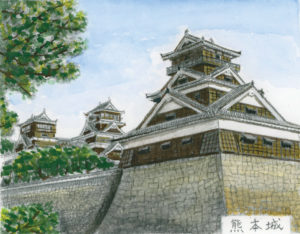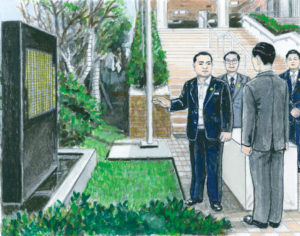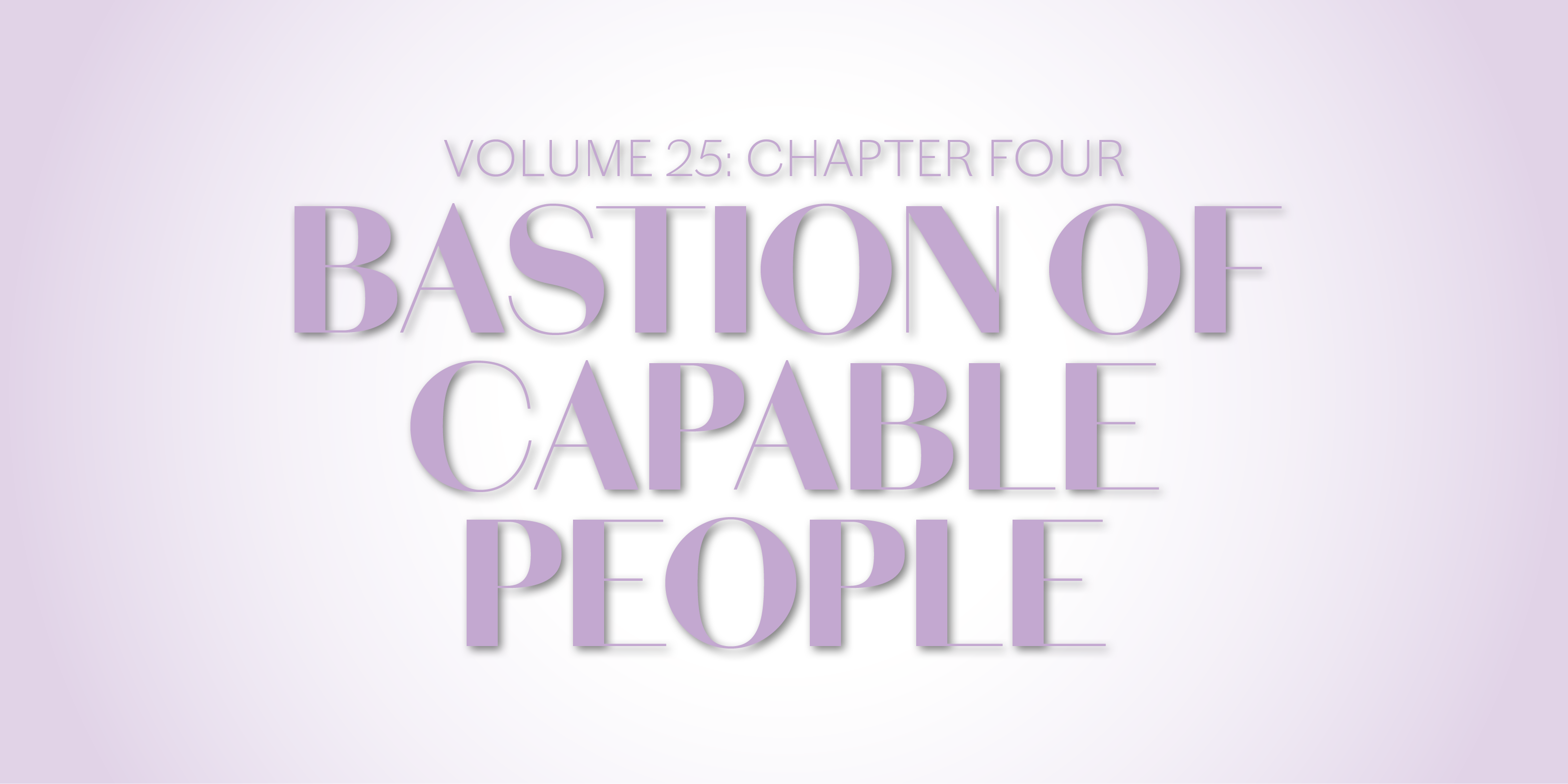Chapter Summary

Illustration courtesy of Seikyo Press.
On May 27, Shin’ichi departed for the Kumamoto Culture Center. At the unveiling of a stone monument, which featured a description of the origins of the culture center, he encouraged the youth.
In a discussion with leaders, he said, “The single most important quality of capable individuals is that they have unsparingly dedicated their lives to the path of mentor and disciple for kosen-rufu” (The New Human Revolution, vol. 25, p. 281). To do this, he emphasized, leaders need to make kosen-rufu their true goal in life and, burning with that spirit, inspire fellow members.
The next day, on May 28, Shin’ichi expressed his wish for the members there to make their slogan “Capable People of Kumamoto” and advance based on this.
At an informal discussion early that evening, an activity report was given by a a member from Misumi, the place where Shin’ichi took his first steps in Kumamoto Prefecture during his first visit there. A pair of brothers from Tamana shared their experience of karmic transformation, and the members from Itsuki Village reported how they had endured struggles after heavy rain had struck the area in 1963.
Thinking of the melancholic “Itsuki Lullaby”—a song young girls sang when they left home to work as nursemaids— Shin’ichi said: “Mr. Makiguchi wanted more than anything to help children in deprived circumstances—such as the nursemaids who sang the well-known Itsuki lullabies—find happiness. That’s the starting point of Soka education and Mr. Makiguchi’s wish for the Soka Gakkai too” (NHR-25, 340).
He also encouraged a medical student whose father did not practice Nichiren Buddhism.
He also spoke about the importance of fostering and uniting people of many different personalities and talents to build an invincible bastion of Soka.
On May 29, Shin’ichi did gongyo with the Kumamoto members and played the piano for them, encouraging them up to the last moment before his departure.
Unforgettable Scene

Illustration courtesy of Seikyo Press.
Youth, Study for the Sake of the Future!
In May 1977, Shin’ichi visited the recently opened Kumamoto Culture Center. Just moments after arriving, he attended the unveiling ceremony of four stone monuments commemorating the center’s opening.
The stone monuments were engraved with the words of the Soka Gakkai presidents … [one] featured a description of the origins of the Kumamoto Culture Center. During the ceremony, the monuments were unveiled in succession.
“Now, let’s have the prefecture youth division leader read the inscription aloud to everyone!” Shin’ichi suddenly said.
Prefecture Youth Leader Heihachiro Katsuyama was taken by surprise, but he managed to say, “All right,” and he stepped up to the monument. …
Heihachiro’s voice echoed loudly as he read: “Founding of the Kumamoto Culture Center. The volcanic smoke rising from the grand peak of our beloved Mount Aso. … ”
After he had read about three lines of the inscription, he came upon some difficult Chinese characters. It took him two or three seconds to remember how to read the Chinese character for “flutters” in the phrase “the banner of the Mystic Law flutters.” Then he halted again a few lines later at the Chinese character for “tower,” and again at the characters for “earnestly wish.” When he’d finished, his forehead was dripping with perspiration.
Shin’ichi said to Heihachiro: … “Because the Kumamoto Culture Center is the main Soka Gakkai facility in the prefecture, as the prefecture youth division leader, you should have read the passage beforehand and committed it to memory. While you might have felt flustered at being asked suddenly to read it aloud in public, it remains that you should have made that preparation and effort.
“Mr. Toda’s training of youth was very strict. …
“Whenever we saw each other, he’d ask what I was reading. And I didn’t dare just name some title off the top of my head, because he would ask me about the book’s content and make me give him a summary. There was no way you could fool him.
“But thanks to Mr. Toda’s strict yet compassionate training, I became the person I am today.
“For the sake of the future, it is my great hope that young people will make earnest efforts to continue learning throughout life, no matter how busy they are.”
All youth division members are the successors of the Soka Gakkai and leaders who will shoulder the future of society. … Therefore, Shin’ichi offered this stern guidance out of his desire to foster this leader into a first-rate person of culture and learning. (NHR-25, 276–78)
The chapter summaries were originally published in the November 4, 2020, Seikyo Shimbun, while the “Unforgettable Scenes” were originally published in the November 11, 2020, issue.
Key Passage
Surpassing one’s mentor in one’s struggles is the mark of a true disciple. The key to the eternal perpetuation of the Law is to advance kosen-rufu even further than one’s mentor did during their leadership. (NHR-25, 296)
You are reading {{ meterCount }} of {{ meterMax }} free premium articles

